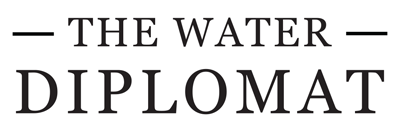Search
Terms searched: Improved sanitation
Results: 7
15 Jan 2022 ADEN, Yemen
Access To Improved WASH Services For 50,000 In Yemen
Japan's $1.2 million USD to the UNDP will help to improve WASH services in five healthcare centres across two areas in the Hadramout region through the rehabilitation of sanitation facilities and systems development for medical waste management.
4 Jul 2021 ABUJA, Nigeria
World Bank Support For Nigeria WASH Services
World Bank credit line will provide upgraded WASH services to schools and health care facilities and help eradicate open defecation across 500 communities.
27 May 2021 New York, United States
"Water Under Fire": UNICEF Report Calls For End To WASH Attacks
UNICEF publishes the third in its series of reports on the devastating impacts on children caused when water and sanitation infrastructure is compromised during conflict. Urges adherence to humanitarian and human rights law as well as improved monitoring and advocacy.
9 Feb 2021 NAIROBI, Kenya
Sanitation and Wastewater Atlas of Africa Profiles, Tracks WASH Services Provision
A comprehensive "atlas" profiling and mapping the state and trends in wastewater management and sanitation delivery across every African nation promises to provide policymakers with the information they need to track progress in an area vital to human health, economies and the environment.Produced jointly by the African Development Bank (AfDB), the United Nations Environment Programme (UNEP) and non-profit environmental communications centre GRID-Arendal, the 284-page "Sanitation and Wastewater Atlas of Africa" incorporates maps, graphics and country profiles with analyses of their water resources and provision of basic services...
9 Feb 2021 TRIPOLI, Libya
Millions Of People At Risk Of Water Shortage, WASH Crisis In Libya
Four million Libyans face imminent water shortage if new solutions are not implemented to tackle declining water, sanitation and health (WASH) conditions in the conflict-torn country, according to a 1 February UNICEF statement.WASH conditions in Libya have deteriorated as a result of escalating violence and unrest following civil war and the killing of the country’s leader, Muammar Gaddafi in 2011...
3 Feb 2021 WASHINGTON DC, United States
Biden’s First Steps On Road to Blue-Green Recovery
Newly-inaugurated US President Joseph Biden has wasted little time in honouring his campaign promise to prioritise climate policy and undo a previous deregulation agenda, and science-denialism ideology propagated by his predecessor.On his first day in office, President Biden demonstrated his commitment to tackling the climate crisis with several executive orders including re-joining the Paris Agreement, revoking the withdrawal of the US from the World Health Organisation (WHO) and cancelling the Keystone XL pipeline...
13 Jan 2021 MANILA, Philippines
Water Security Key Priority In Asia's COVID-19 Recovery
A water development report published by the Asian Development Bank (ADB) last month urges regions across Asia and the Pacific to prioritise water security as part of their COVID-19 recovery initiative to support economic growth and increase social well-being. Asian Water Development Outlook (AWDO) 2020 outlines water sustainability progress and identifies areas which are in need of greater water security to guide future investment decisions and assist Asia in achieving their United Nations Sustainable Development Goals...
